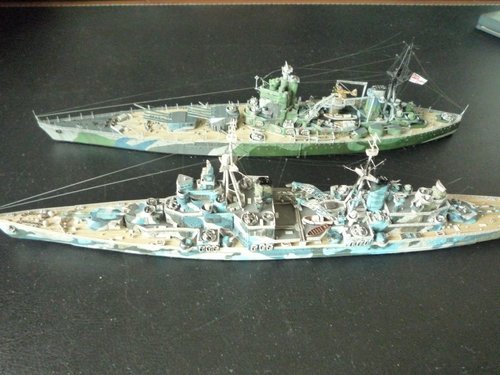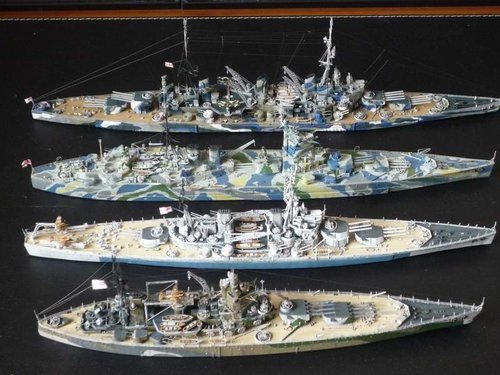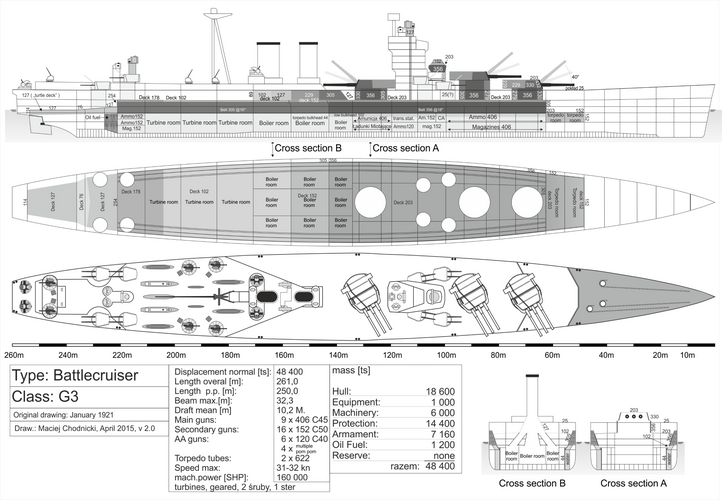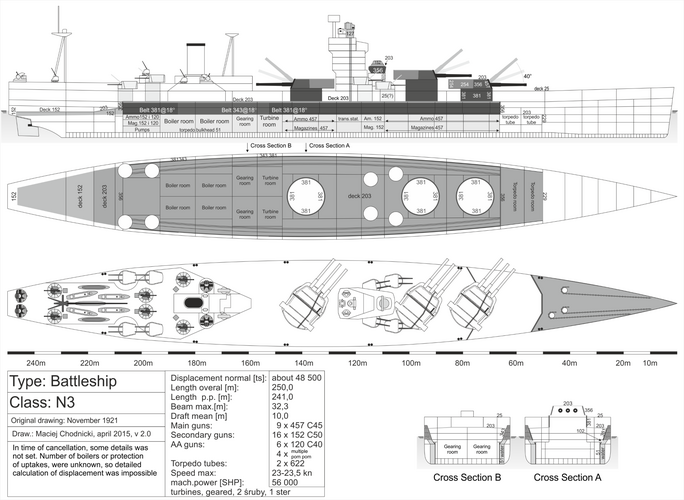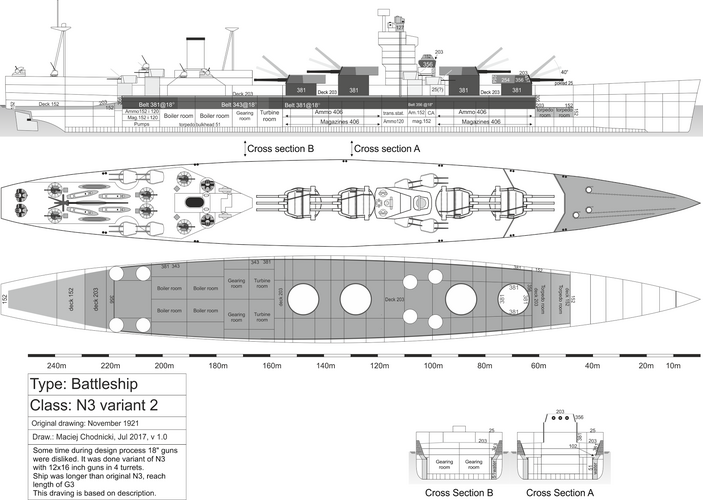- Joined
- 6 September 2006
- Messages
- 4,824
- Reaction score
- 9,407
G3/N3 fantasy ships. Roughly same dimensions as Yamato and Iowa but in case of N3 resistant to 18” fire but with the displacement of Iowa?????
BULLS#$&!
The highly experienced DNC d'Enycourt (who had been designing battleships for two decades) and his team did not go in for BS, they spent two years of innovative design work on these designs.
The Iowa's had much thinner armour than the these designs.
N3 had a 15in thick belt inclined at 18 degrees over the magazines which tapered to 13.5in over the machinery spaces and a 14-9in forward and 14-6in aft bulkheads. The deck armour was 8in on the upper deck, 8in on the lower deck forward, with 8in and 6in aft.
G3 originally had a 14in thick belt inclined at 25 degrees and 8 to 9in thick deck armour. This was scaled back to a 14in thick belt inclined at 18 degrees, bulkheads as N3. The deck armour was 4in over machinery, 8in on flat and 9in on slope over the main magazines and as far aft as the middle boiler room, 7in over the 6in magazines and the after engine room.
Iowa's armour was designed to give a zone of immunity against fire from 16in shells between 18,000 and 30,000yds. Admittedly she had later steels such as STS in her armour scheme - but this was used to save weight. The magazines and engine rooms were protected by a 1.5in STS outer hull plating and 12.1in thick belt on a 0.875in STS backing plate, sloped at 19 degrees (equivalent to a vertical 17in plate) (439 mm), the fore and aft bulkheads were 11.3in (thickened to 14.5in on Missouri and Wisconsin. Deck armour was a 1.5in STS weather deck, 6in armoured deck and a 0.63in STS splinter deck, which over the magazines was 1in. The barbettes were thicker though than the earlier British designs by at least 2in.
Now, what do we mean proof to 18in shells?
The 40cm/45 Type 94 could penetrate a 19.4-22.2in thick belt or 6.5-4.3in of deck armour at 21,872yd (depending on sources), reducing to 14.1-16.3in and 7.4-9.6in respectively at 32,808yd (the gun's range was 35,600yd).
When the N3 was designed, the the requirement for its 18in/45 Mk.II guns was to be capable of defeating a ship protected by a 15in belt and a 7in-inch deck. That was the requirement that led to the selection of an 18in gun and so the ships were armoured to withstand the same. The requirements pretty much meet the same ballpark as the performance achieved by the Type 94 gun - although the British Mk.II had a longer range (42,000yd). So I think based on this data the N3 and G3 would prove to be better able to withstand Yamato's shells, but they were designed to do that - the Iowa was designed to counter other 16in armed ships and although her armour was excellent, it wasn't really designed to defeat such shells - at the time she was designed nobody thought such guns were afloat so its no surprise there was a limit.
As to displacement - Iowa put a lot of her tonnage into her propulsion compared to N3. The G3 was ambitious, but both had novel design layouts with clustered turrets and aft machinery to make the most of the armour and concentrate its weight over smaller areas. The G3s would never of reached 32kt even in trial condition, but they would still have been faster than anything comparable.




